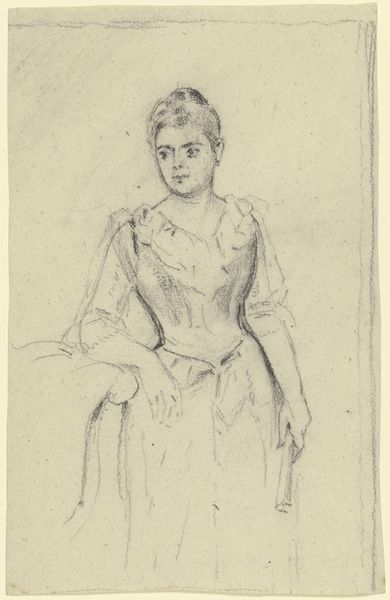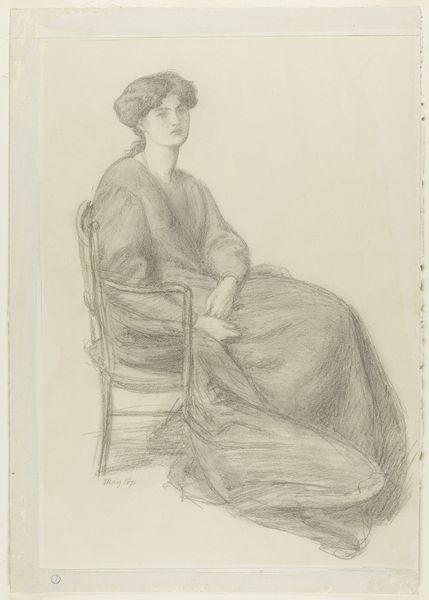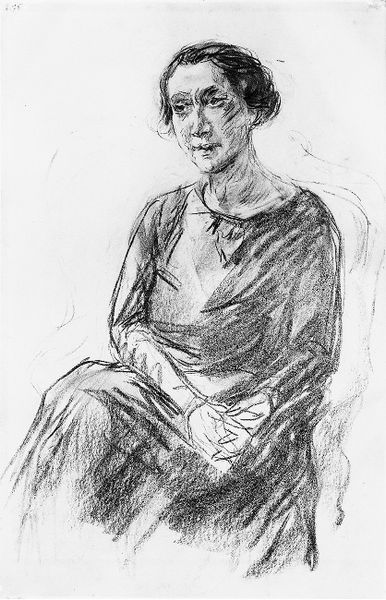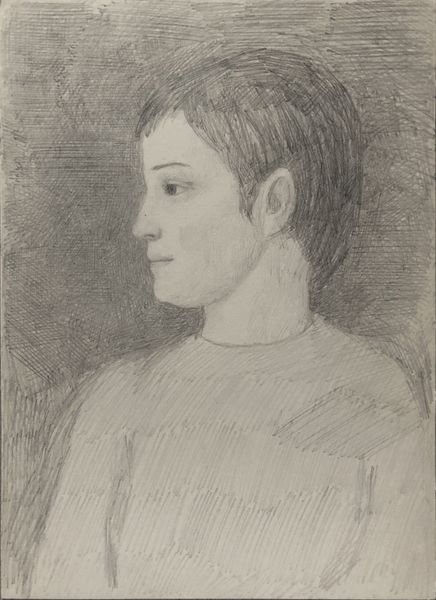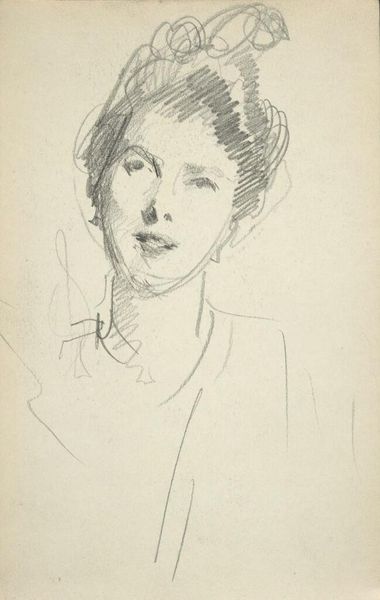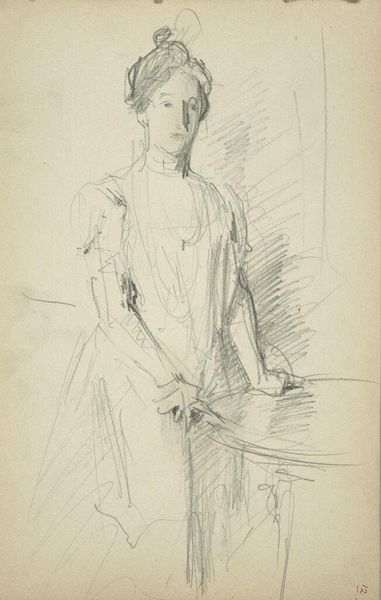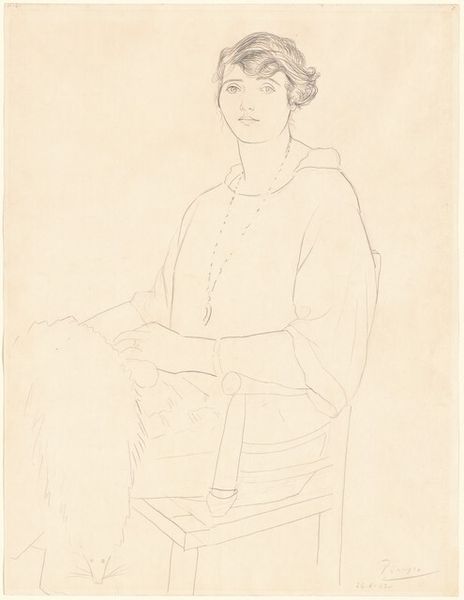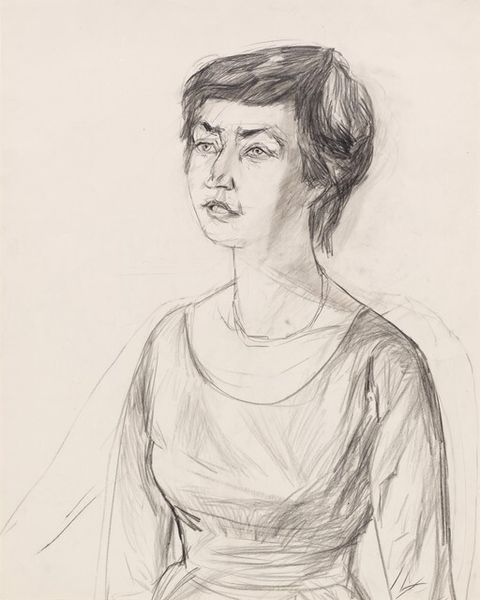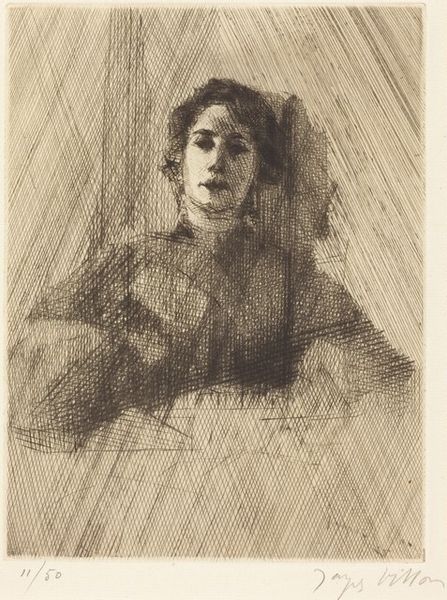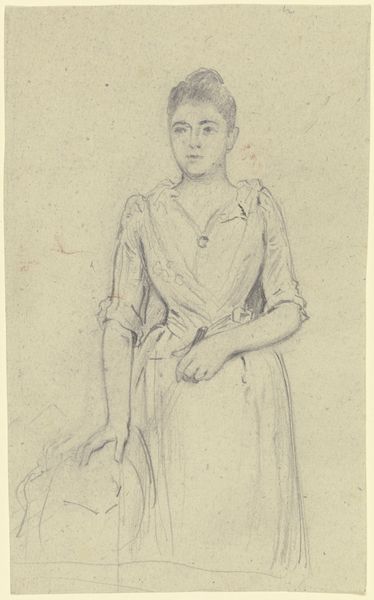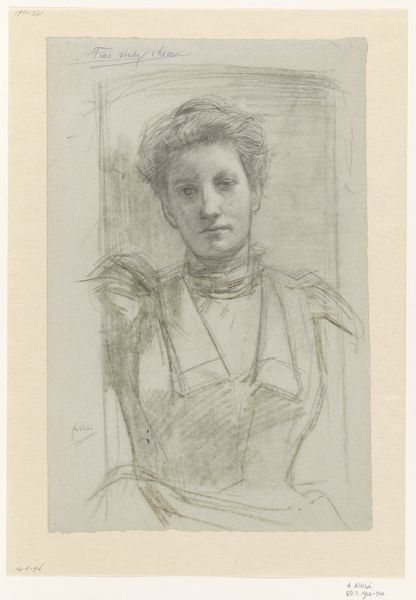
drawing, pencil
#
portrait
#
pencil drawn
#
drawing
#
pencil sketch
#
pencil drawing
#
pencil
#
line
#
portrait drawing
#
realism
Copyright: Hryhorii Havrylenko,Fair Use
Editor: Here we have Hryhorii Havrylenko's "Female image," a pencil drawing from 1975. I'm struck by how simple the hatching technique is, yet it gives the figure so much form. What do you see in this piece in terms of its historical context? Curator: Well, thinking about the Soviet context of 1975, and given what we know about Havrylenko's place in Ukrainian art, this seemingly simple portrait holds a quiet defiance. It exists outside the dominant style of Socialist Realism, which glorified the state and collective labor. This is an intimate portrayal of an individual, focusing on the internal rather than the external world. Editor: So, the very act of creating a personal portrait, like this one, becomes a political statement? Curator: Precisely. Art institutions were tightly controlled then. To deviate, even subtly, by focusing on individual emotion and a less grandiose style, was a form of resistance. The emphasis on the individual is a notable contrast to the collective ideals promoted at the time. What does the simplicity of the pencil and paper tell us? Editor: Maybe a commentary on limited resources, but also maybe that such powerful statements don't require grandiose materials? Curator: Exactly! It’s an assertion of artistic freedom in the face of ideological constraint, done on a small scale. Think of the broader context: artists subtly critiquing power through seemingly benign subjects, finding ways to express individuality when collectivism was enforced. Editor: I hadn’t considered how powerful something seemingly so quiet could be. This really adds a new dimension to viewing artwork from that period. Curator: It encourages us to look beyond the surface and to understand art as participating in the sociopolitical context from which it was made.
Comments
No comments
Be the first to comment and join the conversation on the ultimate creative platform.
